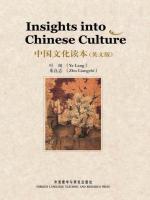Insights into Chines
A Gateway to the Heart of China: China: A Cultural Reader Review
In the ever-expanding global dialogue, understanding Chinese culture is not just a matter of academic curiosity but a key to bridging civilizational divides. Insights into Chinese Culture, an exquisitely crafted English-language compilation, serves as an invaluable compass, guiding readers through the multifaceted landscapes of China’s ancient wisdom, contemporary dynamism, and enduring cultural legacy. This meticulously curated anthology transcends surface-level introductions, offering a nuanced exploration that resonates with both seasoned Sinophiles and newcomers eager to decode the essence of the Middle Kingdom.
One of the book’s greatest strengths lies in its comprehensive scope, seamlessly weaving together threads from history, philosophy, art, literature, religion, and social norms. From excerpts of Confucian classics like The Analects and Tao Te Ching, which illuminate the moral and ethical foundations underpinning Chinese society, to modern essays dissecting China’s rapid urbanization and digital revolution, each chapter unfolds like a chapter of a grand narrative. Readers encounter timeless proverbs that distill centuries of practical wisdom, traditional poems that capture the beauty of nature and human emotion, and vivid descriptions of festivals like Chinese New Year and Mid-Autumn Festival, bringing to life the nation’s vibrant cultural tapestry.
The book’s editorial choices demonstrate a deep respect for authenticity and diversity. Instead of homogenizing Chinese culture into a monolithic concept, it presents multiple voices across eras and regions. Ancient philosophical treatises sit alongside works by contemporary Chinese writers, showcasing the continuity and evolution of cultural values. For instance, the inclusion of Mo Yan’s short stories and Bai Juyi’s Tang-dynasty poetry not only highlights China’s literary prowess but also reveals how storytelling traditions adapt to modern contexts. Moreover, the integration of visual elements, such as traditional calligraphy, ink paintings, and photographs of cultural heritage sites, enhances the immersive experience, allowing readers to appreciate the visual dimensions of Chinese aesthetics.
Language accessibility is another triumph. While the content delves into complex ideas, the English translations and explanations remain clear and engaging. Technical terms are thoughtfully annotated, and cultural references are contextualized, ensuring that readers with varying levels of familiarity can follow the narrative. This approach strikes a delicate balance between academic rigor and readability, making the book suitable for classroom use, self-study, or casual exploration.
However, like any cultural survey, China: A Cultural Reader faces the challenge of comprehensiveness. Given China’s vastness and historical depth, some readers may yearn for more in-depth analyses of specific topics, such as regional dialects, minority cultures, or recent sociopolitical debates. Additionally, while the book celebrates China’s cultural achievements, a more critical examination of contemporary cultural challenges—such as the tension between tradition and globalization—could have added further richness to the discourse.
Despite these limitations, China: A Cultural Reader stands as a remarkable achievement. It succeeds not only in disseminating knowledge but also in fostering empathy and cross-cultural understanding. By inviting readers to engage with China’s past and present, it dismantles stereotypes and cultivates a deeper appreciation for the country’s contributions to human civilization. Whether you seek to expand your cultural horizons, prepare for a journey to China, or simply indulge in the beauty of Chinese thought, this book is an essential companion—a portal to a world where ancient traditions meet modern aspirations, and where every page reveals a new layer of China’s timeless allure.



 京公网安备 11010802032529号
京公网安备 11010802032529号